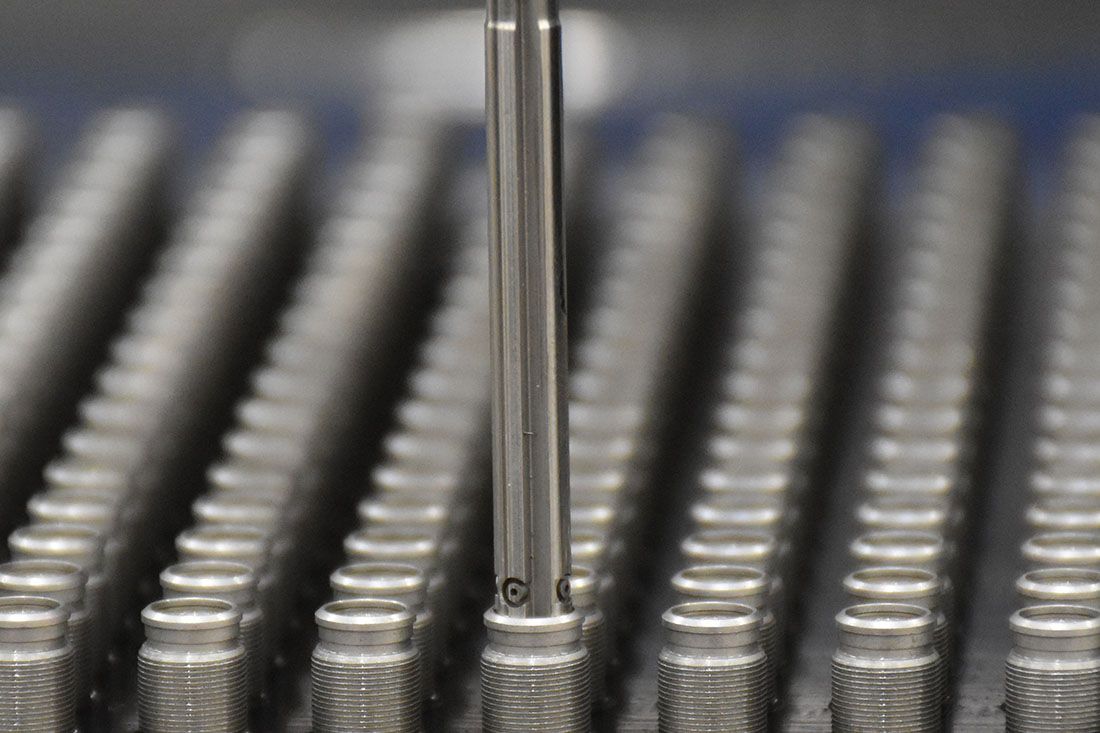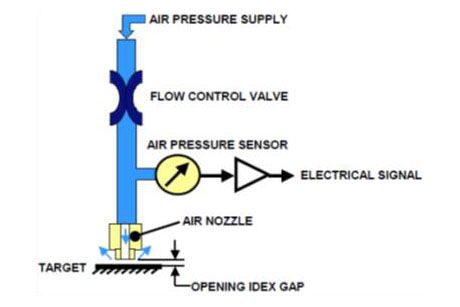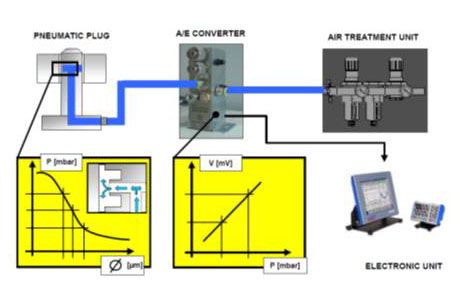Technologies -- Air to Electronic
The penumo-electronic measurement is done with the use of compressed air at a constant pressure. The air is used in a circuit where the transducer elements are suitably located to transduce the distance of a target position from a reference into an electrical signal.
With this technology, it is possible to perform dimensional and geometric measures for a part.

The pneumo-electronic technology offers the following benefits:
- It is ideal to measure small holes
- It is suitable to measure dimensions with very small tolerances, obtaining a measure resolution down to 0.01µm on the electronic unit
- Geometrical and dimensional measures are acquired with no direct contact of the part
Operational principle
The pneumo-electronic technology is based on the pressure divider principle; it is composed of a pneumatic circuit with compressed air, where the following elements are present:
- Constant supply of air pressure
- Flow control valve to generate a pressure drop
- Air pressure sensor to detect the intermediate pressure
- An air nozzle that is positioned at a certain distance from the target to create a GAP opening index
The dimensional variation of the surface to be inspected generates a GAP variation leading to an intermediate pressure variation. This makes its trends directly proportional to the ratio between the equivalent sections of the flow control valve and of the GAP.
The air pressure sensor transduces this pressure variation into an electrical signal variation.

The air to electronic measurement allows dimensional and geometrical inspection without having direct contact with the part inspected. In order to create a sample of the measurements, the pneumo-electronic gauge utilizes air pressure variation. The measurement is obtained from the proportional transduction of the air pressure variation into an electrical signal variation, so that the operator is in a condition to view the measurement value.
